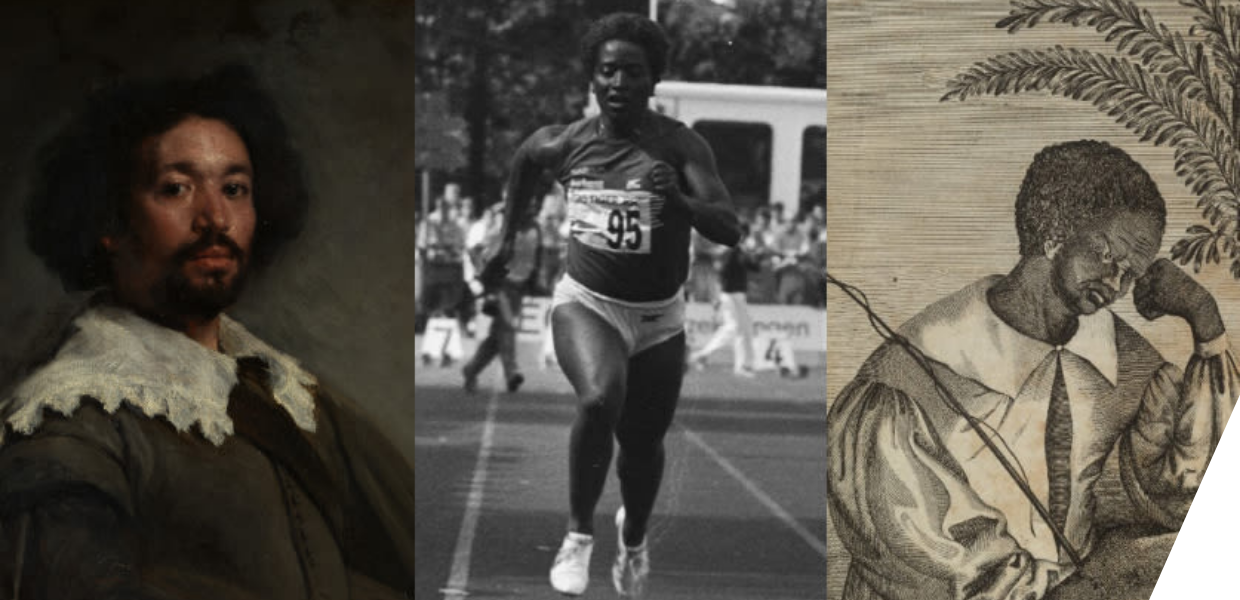Celebrating Black history, stories and achievements
Black people have been part of European history, society and culture for centuries, but their presence has often been overlooked. Through editorial and digital storytelling, in October we aimed to bring a spotlight to Black history in Europe.
The cornerstone for Black History Month on the Europeana website was a new exhibition ‘Black lives in Europe’, which presents the stories and achievements of a number of Black figures from across Europe from the 1600s to the present day. The exhibition was published in English as well as French, German, Italian, Polish, Romanian and Spanish.
In October we also published three new galleries and seven blogs which told further stories relating to the lives and communities of Black people in Europe. These were prepared by Europeana and partner projects, organisations and individuals including Europeana Sport, the Statens Museum for Kunst, Actions Culturelles Internationales, Dr Susan Hazan and Professor Johanna Fisher. Based on this editorial, we created an email course highlighting Black history through the stories of 13 individuals. More than 1,000 people subscribed to the course, and we were delighted that it received positive feedback from surveyed subscribers, with each respondent saying they had learned something new. You can still sign up for the course.
All these stories were gathered together on a page on the Europeana website which was promoted throughout October.
Learning from institutions
We also wanted to inspire cultural heritage professionals with examples of work from the sector which brings Black cultural heritage to wider audiences. We interviewed institutions including the Horniman Museum, Museum X, Black Central Europe and the Black Archives Amsterdam to learn more about the initiatives they are running which acknowledge, surface and highlight Black history in their own collections.
These institutions shared valuable perspectives on steps that cultural heritage institutions can take to share Black history. Among other things, we learned about the importance of acknowledging challenges and problems in the representation of Black history, in order to find solutions; undertaking critical self-reflection on collections and past practices; and working with people of colour in the interpretation of Black history. Explore the interviews.
Responsibilities and challenges
As many of our colleagues who worked on editorial for Black History Month do not have the lived experience of being Black, we wanted to make sure that our writing for Black History Month was responsible, accurate and free from bias. To do this, we commissioned a 'sensitivity review' of the text of the Black Lives in Europe exhibition, which was undertaken by a Black cultural historian.
The lives and histories of Black Europeans - particularly women - are not well-represented in cultural heritage collections. In many cases, the language used to describe relevant records in metadata can be out-dated and offensive. In some of our editorial outputs, we put a content warning in place to alert readers to this possibility.
We also faced a challenge in promoting the season and related editorials. We create a bespoke social media advertising campaign for each editorial we publish. But some of our editorials relating to Black History Month (such as the Anti-Apartheid movement and Black people in European art) were flagged by Facebook as 'mentioning politicians or being about sensitive social issues' and we were unable to promote them, even after requesting a review. Similarly, our promotion of the exhibition Black Lives in Europe was permitted in some languages, but not in others. It is challenging to predict what will be rejected, especially when working on a variety of themes and in different languages. However, we found that promoting the landing page on which all the editorial pieces could be found was a solution that worked.
Future plans
We will continue to write and promote stories of Black figures both as part of Black History Month and throughout the rest of the year, and we will develop ways to support more diverse authors to curate editorials for the Europeana website.
Would you like to get involved? You can continue to submit ideas for editorial which highlights Black history, or share relevant projects and initiatives through our form. And of course, continue to promote relevant content, blogs, images and objects from your own collections on social media. Use #BlackHistory and tag us @Europeanaeu when you do!

